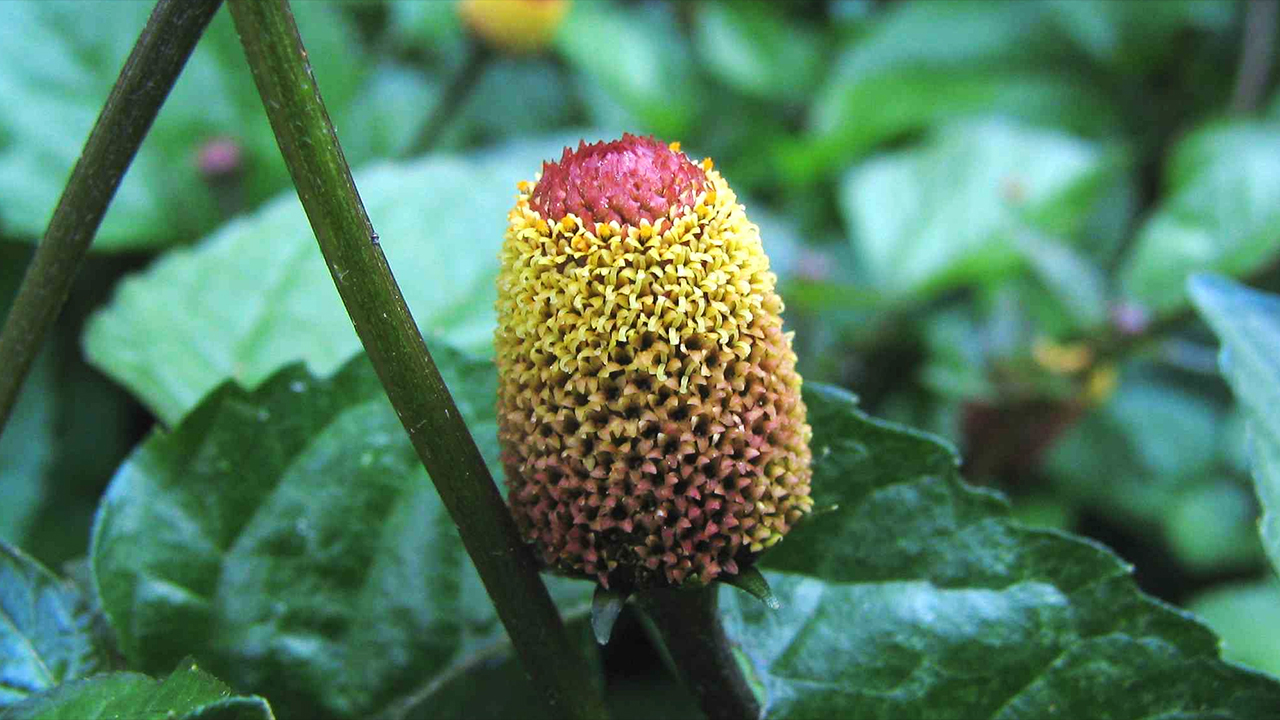Discover how a simple plant could have saved me from the dentist's chair and become my go-to remedy for tooth pain.
It started innocently enough – just a little twinge, like a pesky mosquito that won’t leave you alone. “Oh, it’s nothing,” I said. “A bit of sensitivity,” I thought. Fast forward to a week later, and there I was, clutching my jaw in a way that suggested I was auditioning for the role of a very dramatic silent film star. No more denial: my tooth was staging a full-on rebellion.
Enter the dentist’s office, where the phrase “we’ll have to pull it” was delivered with the kind of cheerfulness usually reserved for offering someone an extra scoop of ice cream. Spoiler: this wasn’t going to be as fun as ice cream. As I reclined on the dental chair, the thought hit me: I should’ve grown a Toothache Plant!
Yes, that’s right – Acmella oleracea, commonly called the toothache plant. Known by Indigenous folks for ages, it is a leafy miracle worker. The bright yellow and red cone-shaped flowers are not just there to look cute—they pack a punch.
Bite into one of those blossoms, and you’ll feel a tingling sensation that can make you momentarily forget you have nerve endings. It’s like a legal, plant-based electric shock to the face. In other words, it’s Mother Nature’s way of saying, “You should’ve come to me first.”
Instead of frantically dashing to the dentist, I could’ve casually strolled into my garden, plucked a flower, and let the tingles do their magic. I might have looked like I was auditioning for the role of the Joker with all the lip buzzing, but at least my mouth would be numb and naturally so. Plus, there is no need to look on Amazon for the gallon-size Orajel!
Think of it: You’re in your garden, sun shining, birds chirping, and you’re casually chewing on a flower, saying, “Oh, this old thing? It’s just a toothache plant. No big deal.” But did I grow It? No. Instead, I spent my time googling the best painkillers while the real hero of the story—Acmella oleracea—was out there, in someone else’s garden. Hindsight, as they say, is 20/20. In my case, hindsight involves puffy cheeks, a hefty dentist bill, and a lingering grudge against myself for not starting the plants earlier. Not only could I have avoided the intense pain before the whole tooth-pulling fiasco, but I could also have become that person at parties. You know the one: “Oh, you’ve never heard of the toothache plant? Well, let me tell you…”
As I sit here, recovering and slowly regaining the ability to eat solid food, one thing is clear: my next gardening project will absolutely involve the toothache plant. Because, why endure the unnecessary pre-tooth-pulling pain, when you can numb your mouth with flowers that make you feel like you’re chewing on tiny fireworks?
And to those of you reading this: when the next twinge of tooth pain hits, don’t wait. Plant a toothache plant, be prepared, and maybe, just maybe, you’ll avoid the dentist’s chair altogether. I didn’t just lose a tooth this morning—I missed my chance to show my dentist that I was a garden-grown pain relief guru.
Discover Beautiful Flowers, Expert Gardening Tips & Interesting Plant Science!
By submitting this form, you are consenting to receive marketing emails from: . You can revoke your consent to receive emails at any time by using the SafeUnsubscribe® link, found at the bottom of every email. Emails are serviced by Constant Contact

About The Author
John Bagnasco has been in the gardening industry for over 50 years, starting with a horticulture degree from Michigan State University and following a stint at Frank’s Nursery and Crafts in Detroit.
After publishing his first book “Plants for the Home Vol. I” in 1976, he moved to California to become regional manager and buyer for the Nurseryland division of Sunbelt Nursery Group.
He then became the head buyer for Armstrong Garden Centers based in Glendora, California. John had a part-time affiliation with Creative Promotions for ten years before joining them full-time in October 2000 as a senior editor and radio personality for Garden Compass.
John has also taught horticulture classes at Palomar College and San Diego State University.
He is the host of the DVD “The Essential Guide to Roses,” which also features Bryan Main and Bruce and Sharon Asakawa.
His most recent book is “Planting Designs for Cacti and Succulents”.
Currently, John is a co-host on “Garden America,” an interactive live gardening show that additionally provides podcasts of the broadcasts accessible on all major platforms.
You can contact John here.

